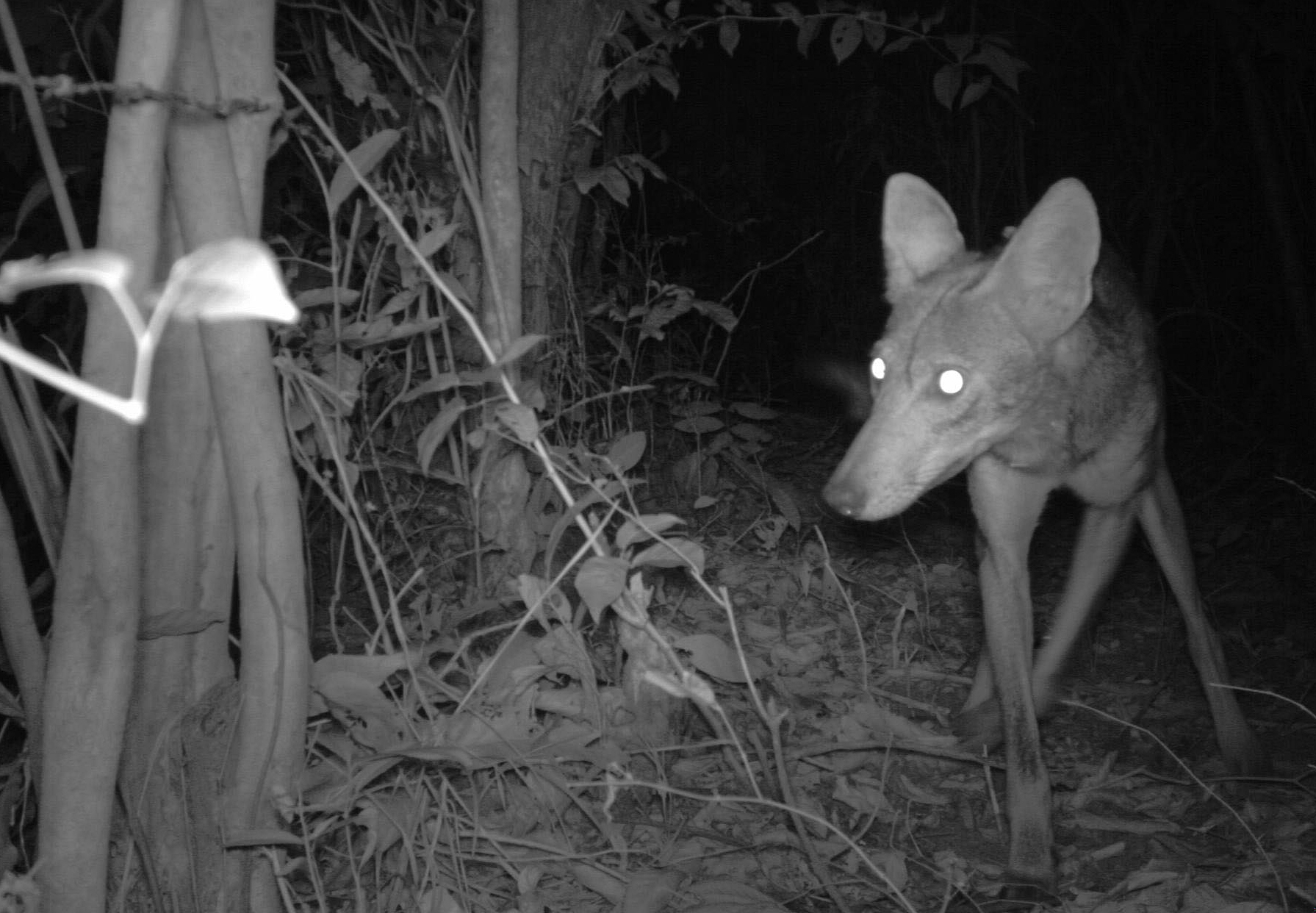Camera Traps Show Coyotes on the Doorstep of South America

Once again, Panama, home of the narrow land bridge that connects North and South America, could play an outsized role in mammal history.
Mammals from both continents crossed the Panamanian Isthmus when it arose 3 to 4 million years ago, an event known as the Great American Biotic Exchange. Camera trap research shows that history may be repeating itself as North American coyotes and South American crab-eating foxes have been detected in eastern Panama. It’s the first time these canids, both members of the dog family, have been found in the same landscape.
“We may be seeing the start of the ‘Not-So-Great American Biotic Exchange,‘“ says Roland Kays, wildlife biologist at North Carolina State University and corresponding author of a paper about the research in the Journal of Mammalogy.
Forests in Central America are shrinking because of urban and agricultural development. Deforestation has reduced habitat for native predators like the jaguar, opening the way for coyotes, known for their adaptability, to move into open spaces.
The last barrier between coyotes and South America is a vast area known as the Darién.
“The Darién is one of the last wilderness areas in South America, part of the frontier, with species like peccaries and jaguars, which are South America’s best defense against coyotes,” Kays says. “The Darién has roads, but not major routes. There’s cattle ranching, but it’s a remote, wild area, so it’s difficult.”
Camera traps detected at the western edge of the Darién in 2016 and another in 2018. The female photographed in 2016 had a slashing leg wound that could have been inflicted by a jaguar, Kays says.
Coyotes hunt rabbit-sized and smaller prey, and are likely eating fruit. Crab-eating foxes, a bit slighter, have a similar diet but feed on smaller animals. Thus far, camera trap images suggest the carnivores, both nocturnal, are avoiding each other, Kays says.
However, their colonization of new areas could impact native species.
“If a new predator comes in, prey animals are naïve,” Kays says. “Predators can decimate them.”
Already found in 49 U.S. states, coyotes are poised to expand their range to a new continent.
“Coyotes are effective dispersers,” Kays says. “One thing we’ve been finding through camera trap images, roadkill and documented sightings is a steady progression of coyote movement for a couple of hundred kilometers – more than 100 miles – in Central America. From here, it’s possible coyotes could run along the beach to get to South America.”
A surprising finding from the study: The physical traits of the coyotes, which appear to be interbreeding with dogs in the region.
“There’s a lot we don’t know about hybridization of coyotes with dogs, but we’ve been finding a lot of coyotes with short tails, hound faces and unusual coloration,” Kays says. “We’ve seen the short tail a lot, not just once or twice.”
Researchers will continue to track the canids. “What we’ve seen in this study is how much animals can take off quickly,” Kays says. “In terms of the forest, hope is not lost. There’s an active conservation community working to restore forests and halt or slow deforestation.”
- Categories:


